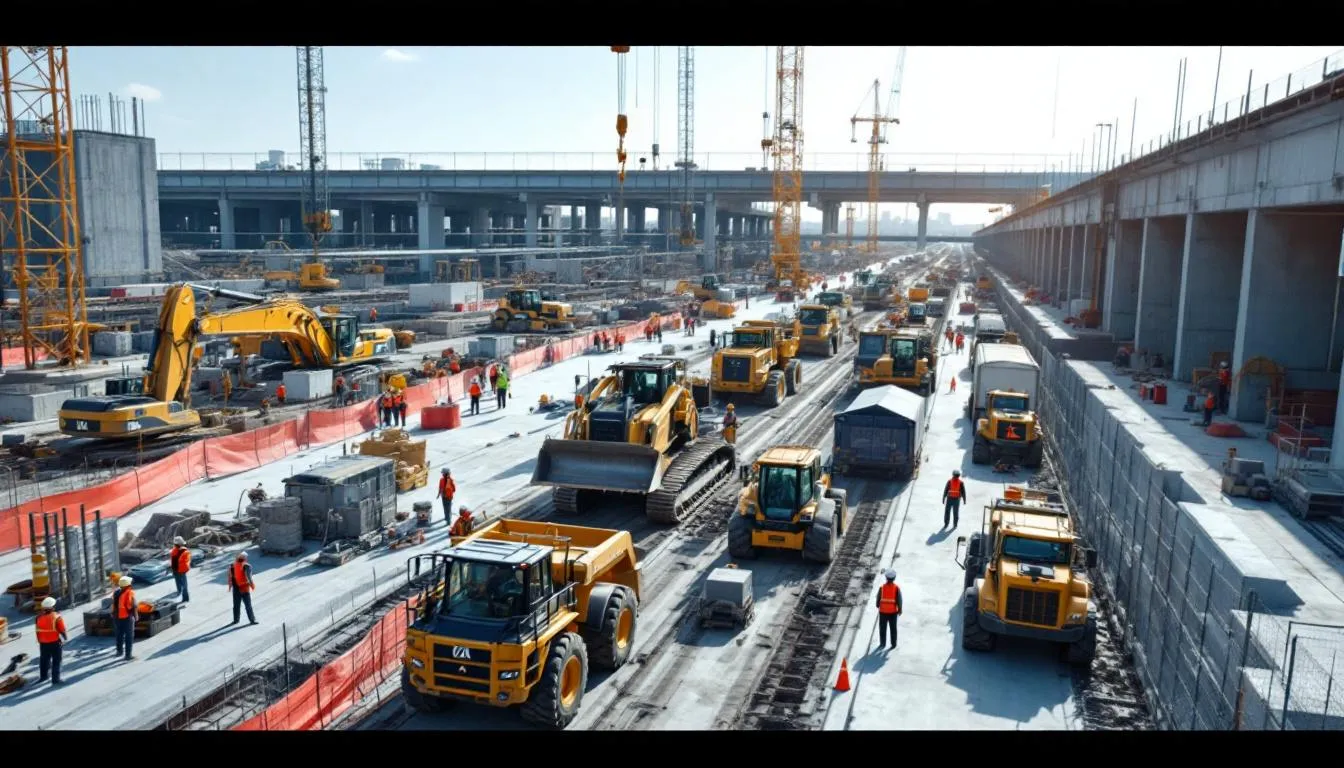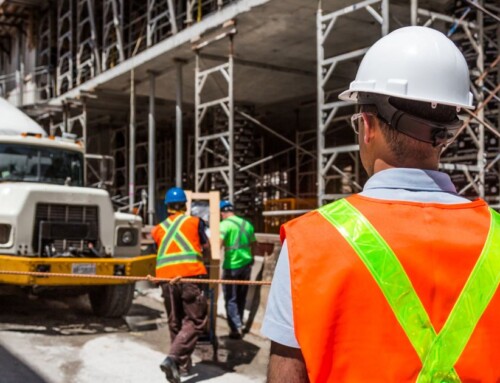Construction Salaries by State (2025)
Construction salaries by state can differ by tens of thousands of dollars for the same trade. That’s why where you work often matters as much as what you do. This guide shows which states pay the most, why pay varies so much, and simple ways to use this information to boost your income. For deeper role-specific data, download our
Construction Salary Survey or explore the latest insights on our Construction Blog.
Pay is shaped by a few basics: local demand, cost of living, union strength, and big projects funded by programs like the federal infrastructure bill.
The Bureau of Labor Statistics also expects steady growth in construction jobs through the decade, which helps keep wages moving up.
Average Construction Salaries by State in 2025
Across the country, typical pay ranges from the mid-$30Ks in lower-cost markets to $75K+ in high-demand states. Benefits (health, bonus, retirement) can add another $10K–$15K to total compensation.

Top-paying states often include Alaska, Hawaii, New York, California, and Massachusetts.
Lower-paying states commonly include Arkansas, Mississippi, Alabama, West Virginia, and South Carolina. Large cities (Honolulu, New York City, Boston, San Francisco, Seattle) usually pay above their state averages because projects are more complex and living costs are higher.
Want to target high-demand markets right now? Check our live roles in cities like Nashville, Atlanta, Chicago, and Tampa on our Construction Jobs page.
State-by-State Pay Snapshot (2025)
Estimates below are directional bands for a typical construction worker. “Hourly” ≈ annual ÷ 2,080 hours. “vs. U.S.” compares to a national midpoint near $58K. Use this as a quick map, then confirm with local postings and our
salary report.
| State | Avg Salary (est.) | Hourly (est.) | vs. U.S. Avg |
|---|---|---|---|
| Alabama | $40.5K | $19–$20 | Below |
| Alaska | $68.5K | ~$33 | Above |
| Arizona | $56.8K | ~$27 | Near |
| Arkansas | $38.2K | ~$18 | Below |
| California | $64.1K | ~$31 | Above |
| Colorado | $58.5K | ~$28 | Near |
| Connecticut | $60.5K | ~$29 | Above |
| Delaware | $55.5K | ~$27 | Near |
| District of Columbia | $63.0K | ~$30 | Above |
| Florida | $54.2K | ~$26 | Below/Near |
| Georgia | $54.5K | ~$26 | Below/Near |
| Hawaii | $67.2K | ~$32 | Above |
| Idaho | $52.5K | ~$25 | Below |
| Illinois | $58.8K | ~$28 | Near |
| Indiana | $52.2K | ~$25 | Below |
| Iowa | $51.2K | ~$25 | Below |
| Kansas | $50.0K | ~$24 | Below |
| Kentucky | $50.8K | ~$24 | Below |
| Louisiana | $51.8K | ~$25 | Below |
| Maine | $53.0K | ~$25 | Below |
| Maryland | $59.8K | ~$29 | Near/Above |
| Massachusetts | $62.9K | ~$30 | Above |
| Michigan | $54.0K | ~$26 | Below/Near |
| Minnesota | $57.5K | ~$28 | Near |
| Mississippi | $39.1K | ~$19 | Below |
| Missouri | $52.8K | ~$25 | Below |
| Montana | $52.0K | ~$25 | Below |
| Nebraska | $50.2K | ~$24 | Below |
| Nevada | $56.0K | ~$27 | Near |
| New Hampshire | $56.0K | ~$27 | Near |
| New Jersey | $61.5K | ~$30 | Above |
| New Mexico | $51.0K | ~$25 | Below |
| New York | $65.8K | ~$32 | Above |
| North Carolina | $54.8K | ~$26 | Near |
| North Dakota | $55.0K | ~$26 | Near |
| Ohio | $53.8K | ~$26 | Below/Near |
| Oklahoma | $50.5K | ~$24 | Below |
| Oregon | $58.2K | ~$28 | Near |
| Pennsylvania | $56.2K | ~$27 | Near |
| Rhode Island | $57.0K | ~$27 | Near |
| South Carolina | $42.8K | ~$21 | Below |
| South Dakota | $49.0K | ~$24 | Below |
| Tennessee | $51.5K | ~$25 | Below |
| Texas | $56.5K | ~$27 | Near |
| Utah | $54.5K | ~$26 | Near |
| Vermont | $51.0K | ~$25 | Below |
| Virginia | $57.8K | ~$28 | Near |
| Washington | $60.2K | ~$29 | Above/Near |
| West Virginia | $41.2K | ~$20 | Below |
| Wisconsin | $53.5K | ~$26 | Below/Near |
| Wyoming | $54.0K | ~$26 | Near |
Quick takeaway: higher pay doesn’t always mean higher take-home. Always compare wages with housing costs and taxes. A “lower-pay” state can still deliver more money in your pocket.
Why Some States Pay More
- Cost of living: housing and everyday expenses push wages up in coastal states.
- Union strength: union roles can pay 10–30% more and often include stronger benefits.
- Prevailing wage laws: public projects set higher minimums in many states.
- Local demand: population growth, infrastructure, chip plants, and energy projects increase pay.
- Climate & geography: remote sites and tough conditions (Alaska, Hawaii, mountains) raise rates.
- Licensing & certifications: tougher requirements reduce supply and lift wages.

Regional Highlights
Northeast: among the highest averages thanks to dense cities, strict codes, and steady public work (New York, Massachusetts, Connecticut).
West Coast: strong pay driven by large infrastructure, seismic rules, and clean-energy projects (California, Washington).
Mountain West/Southwest: fast growth from migration and advanced manufacturing (Arizona, Utah, Texas).
Midwest: balanced wages with better cost of living; strong manufacturing and transport projects (Illinois, Ohio, Michigan).
Southeast: rapid job growth; wages rise fastest where storms and rebuilding drive demand (Florida, coastal Carolinas).

Salary by Role (Simple Ranges)
- General labor: ~$32K–$55K (upper end in AK/HI and union markets)
- Carpenter: ~$38K–$68K (upper end in Northeast/West Coast)
- Electrician: ~$45K–$85K (solar/EV work lifts pay)
- Heavy equipment operator: ~$42K–$75K (mining/oil states pay more)
- Construction manager: ~$65K–$125K (varies by project size)
- Specialties (welders, crane, HVAC): ~$40K–$90K depending on licenses and demand
Explore role-specific insights:
- Construction Project Manager Salary Ranges
- Senior vs. Chief Estimator — Skills & Salaries
- How Inflation Pushed Construction Salaries Higher
How to Maximize Your Pay
- Get the license or card that unlocks better jobs in your state.
- Target states with big public programs and worker shortages.
- Compare take-home after housing and taxes—sometimes a “lower-wage” state wins.
- Consider union membership where available for stronger wages/benefits.
- Build skills in solar, EV charging, data centers, and green building.
- Network with contractors doing public and large commercial work.
Ready to move toward a higher-pay market? Browse our
current construction job openings
(Superintendent roles in Atlanta, PM roles in Tampa, Traveling Superintendent in Nashville, and more).
FAQs
Which state pays construction workers the most?
Alaska and Hawaii are frequently at the top, with New York and California close behind. Remote sites, complex projects, and higher costs lift wages.
Do big cities always pay more?
Usually yes. Cities like San Francisco, New York City, Boston, Los Angeles, and Seattle tend to pay above state averages due to project complexity and cost of living.
How much more do union jobs pay?
It varies by state, but 10–30% more is common, plus stronger benefits and training. Check your local rules and apprenticeship programs.
Is it worth moving to another state for higher pay?
Run the numbers. Compare wage, rent/mortgage, taxes, and travel. A lower-wage state can deliver more take-home pay than a high-wage coastal city.
Where can I find official wage numbers?
See the BLS wage data for construction occupations and your state’s Department of Labor for local rates and licensing.
Next Steps
Candidates: Want to explore higher-pay markets? Submit your resume and we’ll be in touch.
Hiring managers: Need salary guidance or help filling roles? Start a confidential search or book a 15-minute call.





